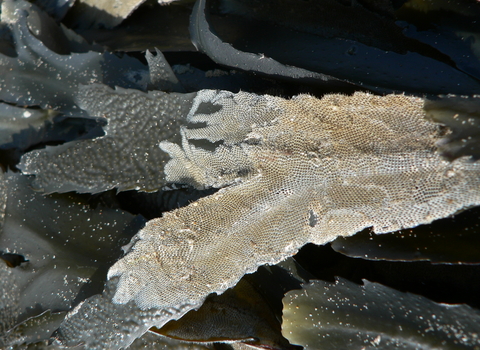
Sea mat ©Jessica M Winder
Sea mat
These mat like growths found on kelp and seaweed are actually colonies of tiny individuals animals.
Scientific name
Membranipora membranacea and Electra pilosaWhen to see
January to DecemberTop facts
Category
Stats
Sea mats vary in size, from a few cm across to covering whole seaweed fronds.Common
